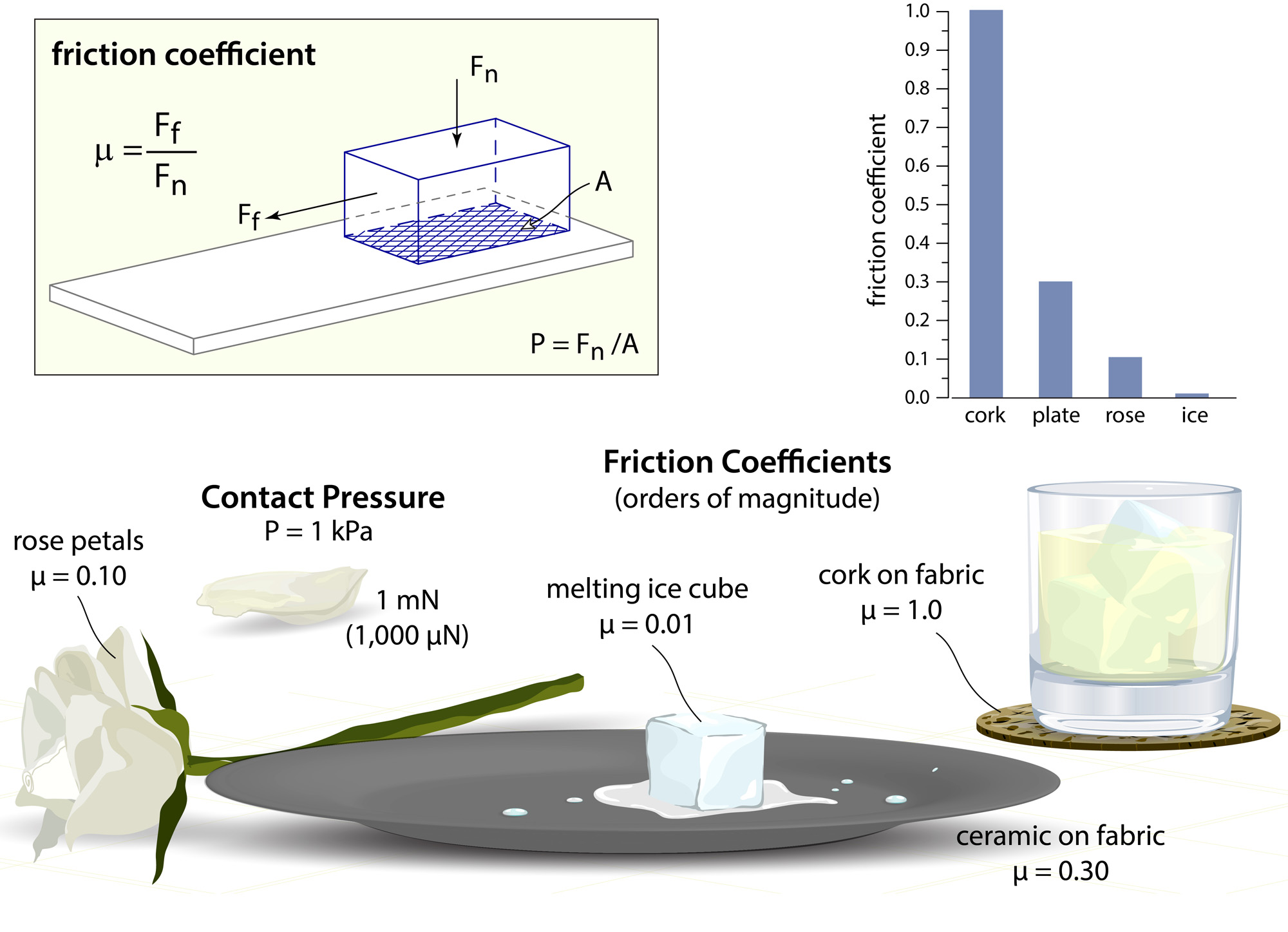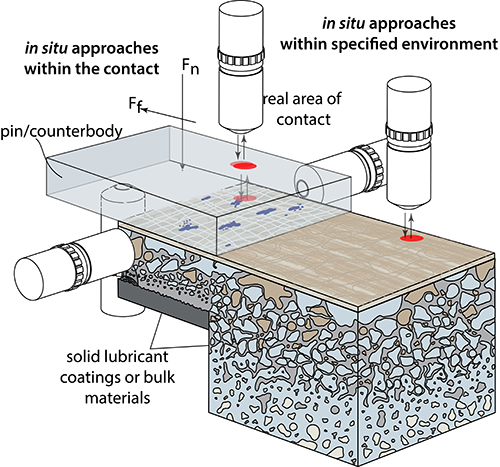Lehigh University
The Tribology Laboratory at Lehigh University
Research
Tribology
Friction
Friction coefficient is based on Amonton’s first law of friction, which states that the friction force, Ff, is directly proportional to the normal load, FN. A friction coefficient, µ, can then be defined by:
Friction coefficients vary several orders of magnitude across material systems.

Friction coefficients are measured with a tribometer. Most modern tribometers apply a known normal load by mass or a measured normal load by an external loading system with a force transducer to measure the normal load. Friction forces are measured, and a friction coefficient can be determined. Schmitz et al. and Burris and Sawyer address the difficulties of measuring friction coefficient and the uncertainties associated with it [1, 2]. They conclude that misalignments with the transducer and the frictional and normal forces can produce errors, but these errors can be compensated by finding the instrument-related uncertainty of coefficient of friction and by performing sliding reversals to average out the error associated with the misalignment.
1. Schmitz, T.L., et al., The difficulty of measuring low friction: Uncertainty analysis for friction coefficient measurements. Journal of Tribology-Transactions of the Asme, 2005. 127(3): p. 673-678.
2. Burris, D.L. and W.G. Sawyer, Addressing practical challenges of low friction coefficient measurements. Tribology Letters, 2009. 35(1): p. 17-23.




